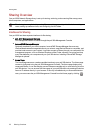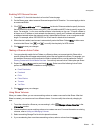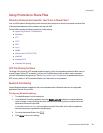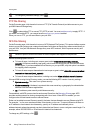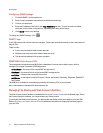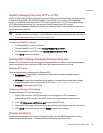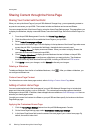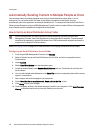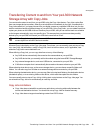
Configuring SNMP settings
1. To enable SNMP, click the switch on.
2. Enter a unique username and password to define the community.
3. Confirm your password.
4. Enter the IP address of the host in the Trap Receivers text box. To grant access to multiple
receivers, list all of them in the text box, separating each entry with a space.
5. Click Apply to save your settings.
To change any SNMP settings, click .
SNMP Traps
A px4-300r can provide various traps to a manager. These traps provide information on the current state of
the px4-300r.
Traps include:
● A drive may have either failed or been removed
● Multiple drives may have either failed or been removed
● The device encountered a file system corruption
SNMP MIB File for the px4-300r
The management information base (MIB) file is a database of various device object types, which a
manager can change. Examples of MIB objects are:
deviceName — the name of the LenovoEMC storage device
diskName — the name of drives on the LenovoEMC storage device
conTable — a table for the connected client count
raidStatus — a description of the RAID status. Values are Normal, Rebuilding, Degraded, RebuildFS,
and Faulted.
The MIB file is available for downloading by entering the following URL in your browser:
http://<devicename>/manage/mibs/lenovoemcmib.txt
Managing File Sharing with Web Access (http/https)
The Web Access protocol enables or disables the link to the Content Viewer from the Shares page. When
the Content Viewer is disabled, you cannot browse any Share content.
If you disable the Web Access protocol, you also disable the display of the home page on your px4-300r.
Refer to Sharing Your Content with the World for additional information on displaying the home page for
your px4-300r.
Sharing Files
31 Using Protocols to Share Files



